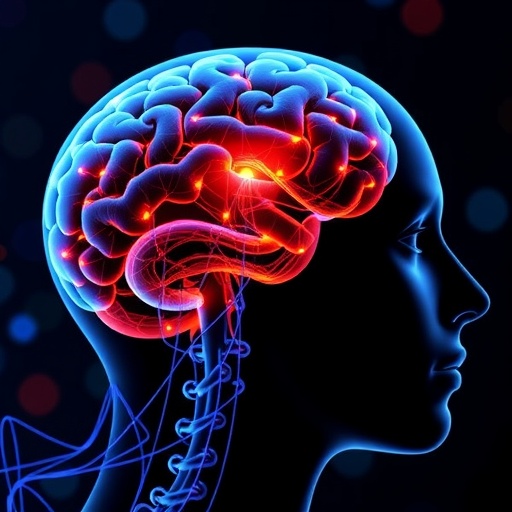Artificial Intelligence (AI) is ushering in a groundbreaking era in drug development, particularly in the realm of solid tumors. By synergizing advanced computational models with multi-omics data, researchers are transforming traditional methodologies, shortening the research and development timelines from decades to just a couple of years. This remarkable acceleration is largely due to generative AI platforms that streamline the optimization process for various therapeutic modalities, including small molecule inhibitors, biologics, and messenger RNA (mRNA) vaccines. Furthermore, AI is instrumental in addressing challenges posed by tumor heterogeneity, thus enhancing drug efficacy while simultaneously predicting potential resistance mechanisms that may arise during treatment.
A significant aspect of AI’s role in solid tumor drug development revolves around the analysis of multi-omics data. By integrating findings from genomics, proteomics, and other molecular frameworks, AI aids in the identification and validation of novel therapeutic targets. This innovative approach not only accelerates the discovery process but also improves the precision of target selection, particularly for historically undruggable proteins such as KRAS. The successful application of reinforcement learning techniques and computational models, including AlphaFold2, has led to the development of novel inhibitors that hold promise for treating patients with specific KRAS mutations.
In recent years, the collaborative efforts of AI and single-cell RNA sequencing (scRNA-seq) have been crucial in decoding the intricate landscape of tumor heterogeneity. AI-driven models, such as SELFormer, have enabled researchers to discern critical immune evasion drivers in tumors like pancreatic ductal adenocarcinoma (PDAC). Notably, the application of spatial transcriptomics coupled with deep learning has illuminated pathways that were previously elusive, thereby paving the way for the repurposing of existing drugs to enhance therapeutic outcomes.
The design of drugs targeting up-to-now “undruggable” targets is perhaps one of the most exciting applications of AI in oncology. With advanced techniques that harness the power of reinforcement learning, novel allosteric inhibitors are being discovered and developed, addressing aggressive cancers linked to proteins like MYC. Such advances suggest that through AI, therapies that were once thought unattainable may soon enter clinical settings. The approval of drugs targeting KRAS G12C mutations, such as sotorasib and adagrasib, exemplifies the speed at which AI can translate laboratory discoveries into therapeutic options.
Moreover, generative AI platforms revolutionize the classical approach to drug design. By automating hit identification and toxicity predictions, scientists can now create novel compounds at unprecedented rates, cutting down both synthesis efforts and timelines significantly. The emergence of new molecules targeting enzymes critical to cancer metabolism showcases how computational models can anticipate and mitigate challenges like drug resistance, refining drug design into a more agile process.
Biologics, particularly antibody-drug conjugates (ADCs), have also benefited immensely from AI integration. With AI’s capability to forecast target efficacy and patient responses, newer generations of ADCs, such as Enhertu, have reached the market, delivering better outcomes for patients with diverse cancer types. These innovations underline the imperative role of AI in shaping the future of oncology therapeutics. The rise of next-generation ADCs marks a pivotal shift in how biologics are tailored and optimized based on patient-specific factors.
Additionally, AI’s influence extends to the burgeoning field of mRNA vaccine development, a sector that became prominent during the COVID-19 pandemic. Leveraging AI for neoantigen prediction and mRNA design not only promises precision in targeting tumors but also enhances the stability and delivery mechanisms of these vaccines. Tools that accurately predict T-cell receptor (TCR) and antigen interactions can significantly increase the odds of successful immunotherapeutic interventions, tailoring vaccines to the unique molecular makeup of an individual’s cancer.
However, despite these strides, several challenges impede the clinical translation of AI-driven innovations in oncology. The gap between in vitro and in vivo efficacy remains a major hurdle. Promising organ-on-a-chip technologies aim to bridge this chasm by closely mimicking human physiological environments and providing insights into drug responses that more accurately reflect clinical outcomes. Additionally, biases inherent in training data can lead to disparities in model predictions, potentially affecting patient care. Approaches such as adversarial debiasing and the use of population-specific AI models are necessary to rectify these discrepancies.
As AI models are increasingly trained on diverse datasets, the risks associated with data and algorithmic biases become apparent. Underrepresentation of specific populations in genomic data can compromise the applicability of AI outcomes across different demographics. Addressing this issue through techniques like federated learning is critical to ensure that AI models remain robust and relevant in varied healthcare contexts.
Looking toward the future, we can expect to see significant advancements on the horizon. Short-term forecasts point to the development of multimodal foundation models that integrate various data types to enhance the accuracy of therapeutic predictions. Over the next five to ten years, the potential emergence of AI-enabled closed-loop systems could redefine personalized cancer care, providing tailored therapies such as robotic biopsy, nanopore sequencing, and on-demand lipid nanoparticle formulations within mere hours. Such innovations could revolutionize treatment paradigms, drastically shortening treatment timelines and improving patient outcomes.
Ultimately, the integration of AI into solid tumor drug development signifies a paradigm shift, creating opportunities for more personalized, effective, and equitable cancer therapies. Nevertheless, overcoming challenges related to data equity, model interpretability, and clinical validation will require ongoing collaboration among researchers, clinicians, and ethical bodies. The future of precision oncology hinges on continued advancements in AI and its ability to transcend traditional limitations in drug development, promising a new chapter in the fight against cancer.
Subject of Research: The integration of artificial intelligence in solid tumor drug development
Article Title: The Artificial Intelligence-driven Revolution in Solid Tumor Drug Development
News Publication Date: 31-Jul-2025
Web References: https://www.xiahepublishing.com/journal/oncoladv
References: http://dx.doi.org/10.14218/OnA.2025.00009
Image Credits: Jiang-Jiang Qin
Keywords
Artificial Intelligence, Solid Tumor, Drug Development, Multi-omics, Therapeutic Targets, Precision Oncology, Genomics, Biologics, mRNA Vaccines, Computational Models.




